Summer Conference Round-Up
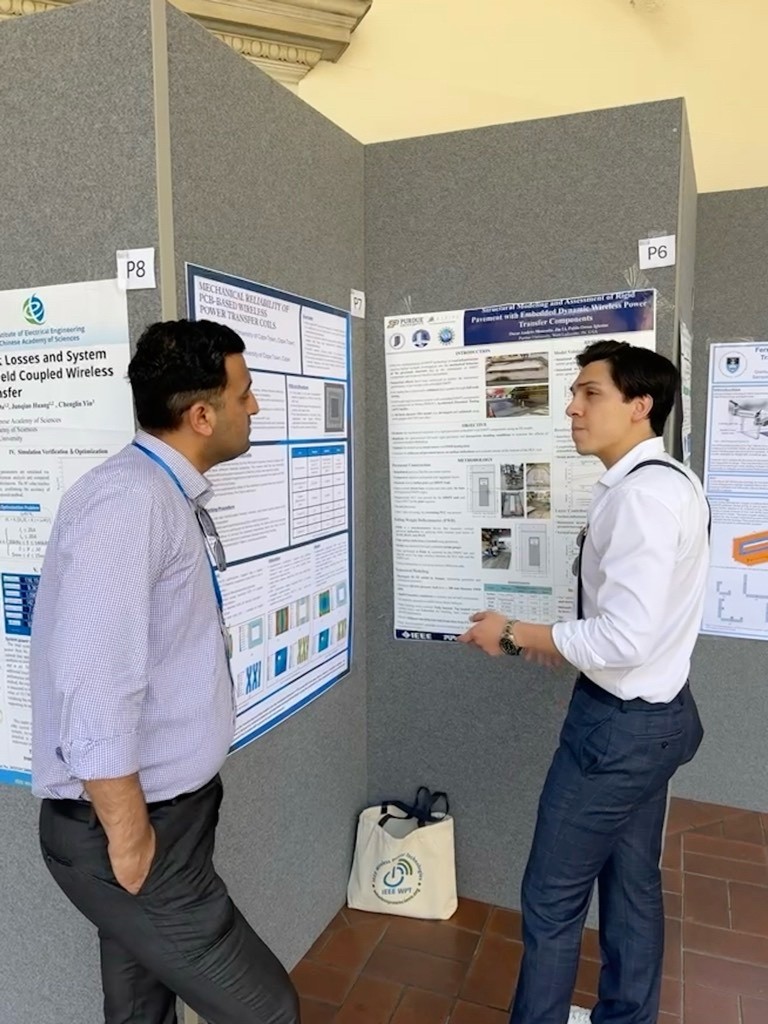
Even after the spring semester has long since ended and the summer heat has reached its peak, ASPIRE students and faculty continue to make exciting strides towards an electrified future. Taking the time to participate in statewide and international conferences, these researchers raise the call for a unified approach to electrification to ensure widespread benefits.
“I believe it is very important to participate in such conferences, whenever a possibility arises,” said Dionysios Aliprantis, a professor of electrical and computer engineering at Purdue University. “They provide a unique opportunity to interact with other experts in the field, and to engage in collaborations that can move the technology forward.”
However, participation in these opportunities requires collaboration and careful preparation.
“The process to present involved submitting abstracts through a competitive review system and refining each presentation to fit the expectations of a technical and interdisciplinary audience,” said Utah State University Ph.D. candidate Fariba Soltani Mandolakani, who presented at the ASCE International Conference on Transportation & Development (ICTD 2025) in Glendale, Arizona on June 8-11.


Ph.D. candidate Oscar Andrés Moncada, who presented at the international Wireless Power Technology Conference & Expo (WPTCE), added the importance of receiving support and grants to take advantage of these eye-opening experiences.
“I was honored to receive two travel grants from Purdue University,” Moncada said. “Thanks to their support, and that of my advisor, I was able to attend WPTCE in Rome, Italy.”
Once at the events, ASPIRE students and faculty members alike had the opportunity to share their research, being readily equipped to field questions from a wide audience about their research.
“During the poster session, I had the opportunity to answer very technical questions on our system design,” said Aliprantis, who presented three times at the WPTCE Rome conference. “Whereas the workshop and panel presentations were meant to provide higher-level information to a broader audience about DWPT, its benefits, and how we are making it happen in the US through the leadership of ASPIRE.”
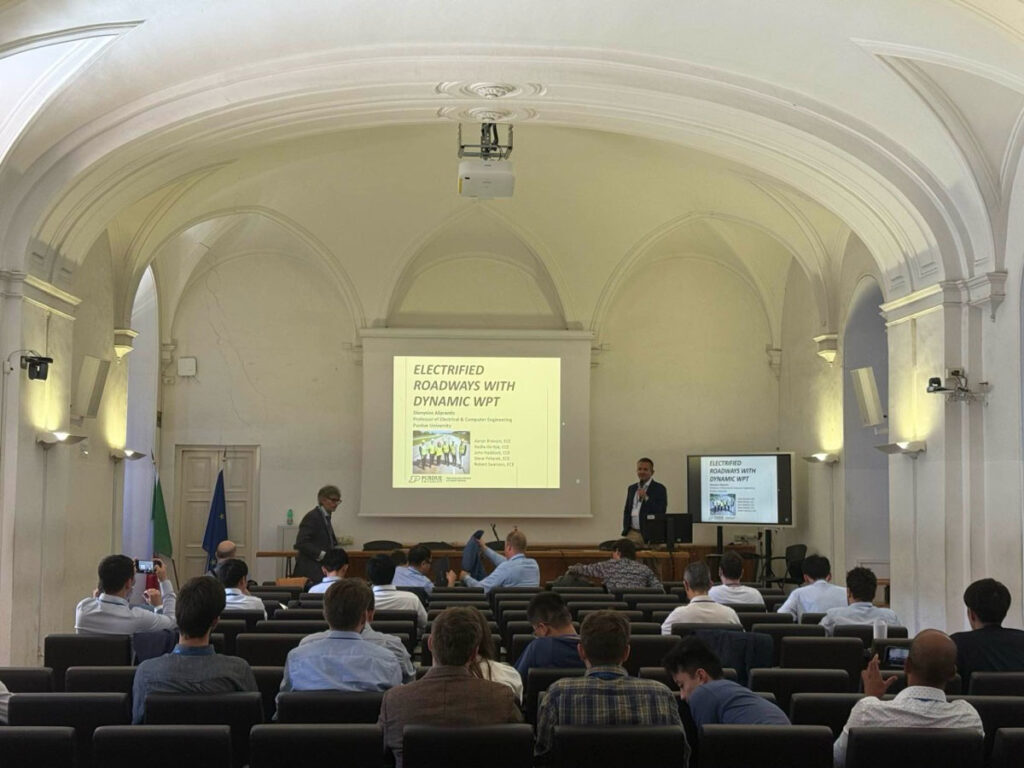
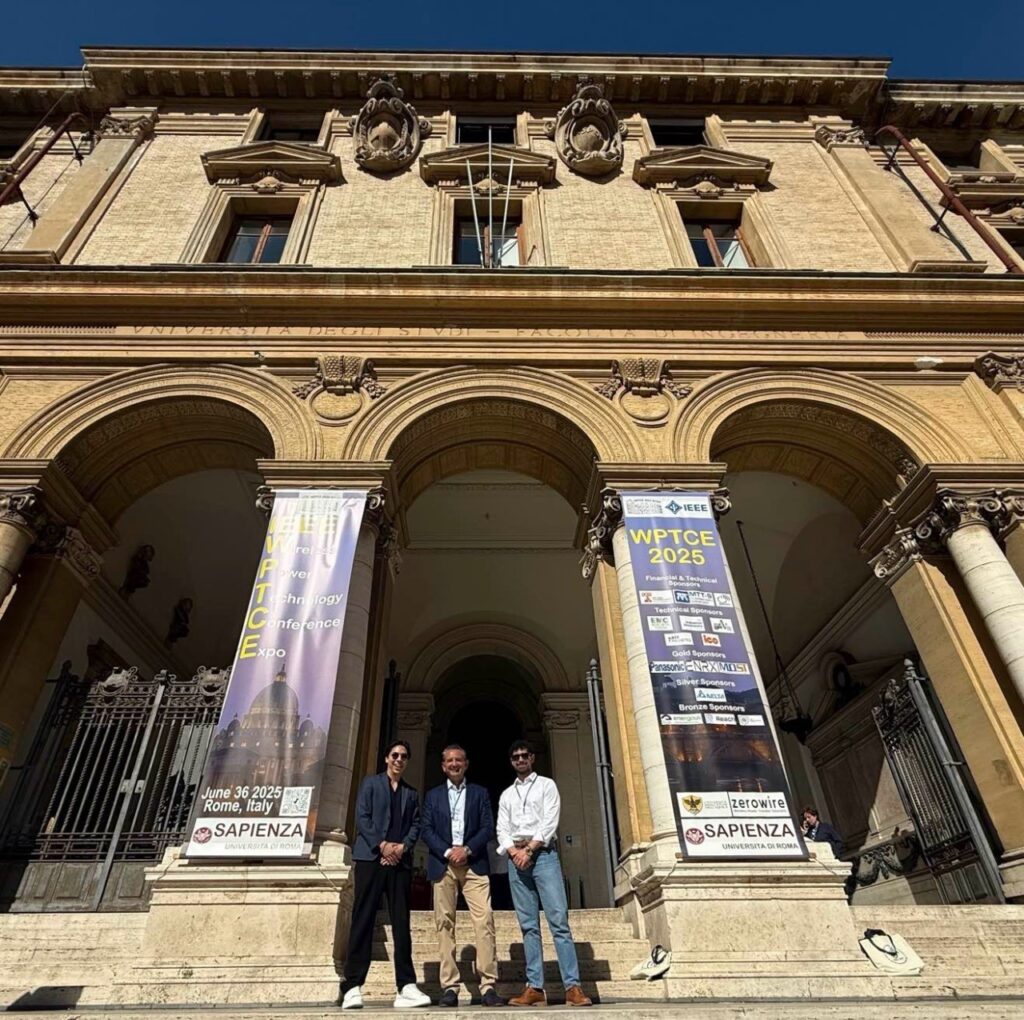
Audience members were from a variety of disciplines and locations, offering a unique experience for each of the presenters to share, learn, and network with a variety of experts.
“It was exciting to present to a wider audience and interact with people with different academic experiences,” said USU’s Paul Bradford, a master’s student and graduate research assistant, who represented ASPIRE at the Utah AI summit on June 18. “It was eye opening to see how much cutting-edge research is going on in Utah.”
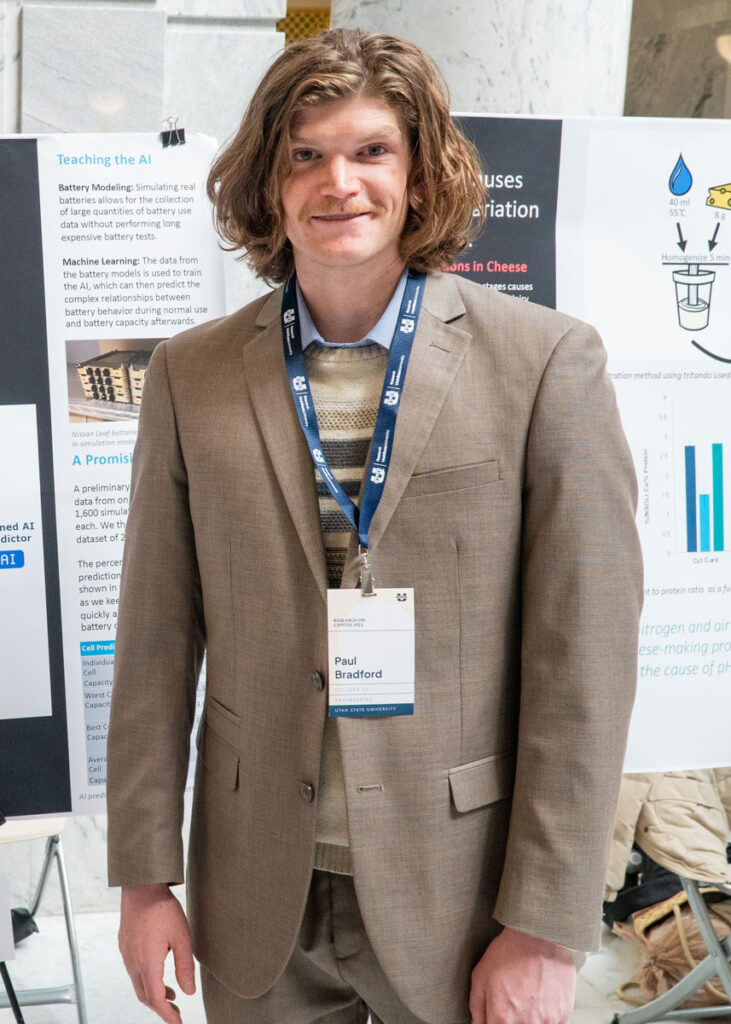
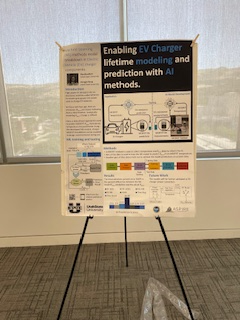

Through this experience, ASPIRE representatives discovered just how impactful of a role ASPIRE is playing in the future of electrification.
“The limited number of studies addressing the construction and evaluation of pavements with embedded DWPT components made our team the only civil engineering group presenting on this topic during the conference,” said Moncada. “This offered a unique opportunity to share the lessons we’ve gathered over the years and to highlight our work at Purdue with ASPIRE — one of the leading initiatives in the practical implementation of this technology.”
In fact, many participants at these conferences were already familiar with ASPIRE’s groundbreaking research.
“It was particularly encouraging to meet people from other states and even other countries who are familiar with ASPIRE’s electrification initiatives,” said Mandolakani. “Many even reference our work during conversations. That recognition further motivated me to continue building bridges between research, practice, and policy.”
Bradford agreed, recognizing the impact of his efforts at ASPIRE.
“My interactions at the event confirmed to me that many of the things I am doing at ASPIRE will prepare me for further opportunities in many fields and disciplines,” Bradford added. “I was also struck by how the work at ASPIRE could have many impacts even outside the world of transportation.”
These and other opportunities allow ASPIRE students and faculty members to make the most of their summer break and continue to advance their learning and ASPIRE’s influence in electrified research and innovation.
For students interested in learning more about the research and conference opportunities at ASPIRE, reach out to Melanie Conrad, the student engagement coordinator. Faculty members can reach out to Steve Pekarek for information about future opportunities.
About ASPIRE:
ASPIRE, a National Science Foundation Engineering Research Center headquartered at Utah State University, leads groundbreaking research and development to accelerate electrification. With over 400 global collaborators, ASPIRE focuses on creating seamless, affordable electrified transportation systems, accessible for all vehicle classes, along with the public infrastructure needed to support them. By reducing emissions, improving air quality, and fostering economic growth through job creation and workforce training, ASPIRE’s work spans engineering, social science, policy, and business. Partnering with top universities, industry leaders, and community groups, ASPIRE is driving the future of advanced transportation. Learn more at aspire.usu.edu.
Contact:
Dionysios Aliprantis
Professor of Electrical and Computer Engineering
Purdue University
ASPIRE ERC
Steve Pekarek
Convergent Research Director
ASPIRE ERC
Writer:
Kayleigh Kearsley
Marketing & Communications Intern
ASPIRE ERC